Trekking through snowy landscapes and winter trails can certainly feel like a formidable undertaking with the unpredictable weather and tricky terrain. Believe it or not, I’ve had my fair share of cold toes and icy slips during my explorations into the frosty wilds.
Learning from these experiences – some more comical than others – I’m here to help guide you on your winter journey. In this article, I’ll be sharing seven expert-backed tips that have proven invaluable for successful winter hiking and snow trekking.
So buckle up – your frosty adventures are about to become safer, more enjoyable, and deeply rewarding!
Key Takeaways
- Dress appropriately in layers using moisture-wicking base layers, insulating mid-layers, and a waterproof shell for winter hiking.
- Stay hydrated by using insulated water bottles or flasks to prevent freezing, drinking regularly during your hike, and carrying extra water as a backup.
- Use spiky tips like hiking poles, microspikes, and snowshoes to enhance stability on icy trails during winter hikes.
- Practice winter hiking techniques such as walking like a penguin, following geese formations for the safest route, layering clothing for temperature control, and respecting your turn-around time.
Dressing Appropriately for Winter Hiking
To stay comfortable and warm during winter hiking, dress in layers that include moisture-wicking base layers, insulating mid-layers, and a waterproof shell.
Wicking
Wicking is a key part of dressing right for winter hikes. It draws wetness away from your body to keep you dry and warm. You need clothes made with moisture-wicking fabric, not cotton, as it fails in wicking.
Your base layer must be warm and good at wicking out sweat. Wearing thermal gloves and insulated boots can also help control your body’s heat better. They let your skin breathe while keeping the cold out.
So make sure to pick gear that supports wicking well for a happy hike!
Insulating
Insulating clothes keep you warm on winter hikes. They trap the body heat that you make when you move. Look for mid layers made of polyester, down, or fleece. These materials are good at catching and holding your body heat.
Avoid cotton clothes and jeans in winter. Cotton holds water next to your skin which can make you cold fast! Also, ski pants might be too hot unless the weather is very cold. Stay comfortable with just-right insulation for where and when you hike!
Shell
A shell is a key part of my gear for winter hiking. I trust it to keep out wind and rain or snow. My best shell is made from synthetic stuff with a waterproof layer that can stretch.
This gives me room to move around and keeps water away from my body. Softshell pants are great, too, as they handle both wind and wetness well. It’s no fun being cold on a hike! So remember, before you head out in the snow, put on your shell – it’s made for this job!
Extra layers
When winter hiking, it’s important to dress in layers. Layering allows you to adjust your clothing system as temperatures change or when your personal temperature changes with activity.
Adding an extra layer in your daypack is a smart idea because it gives you the flexibility to adapt to different conditions. Layering provides insulation and helps trap heat close to your body, keeping you warm in cold weather.
So, make sure you have extra layers handy during your winter hikes for added warmth and comfort. And don’t forget about wearing appropriate footwear that will protect your feet from the cold and wet conditions of winter hiking trails.
Staying Hydrated
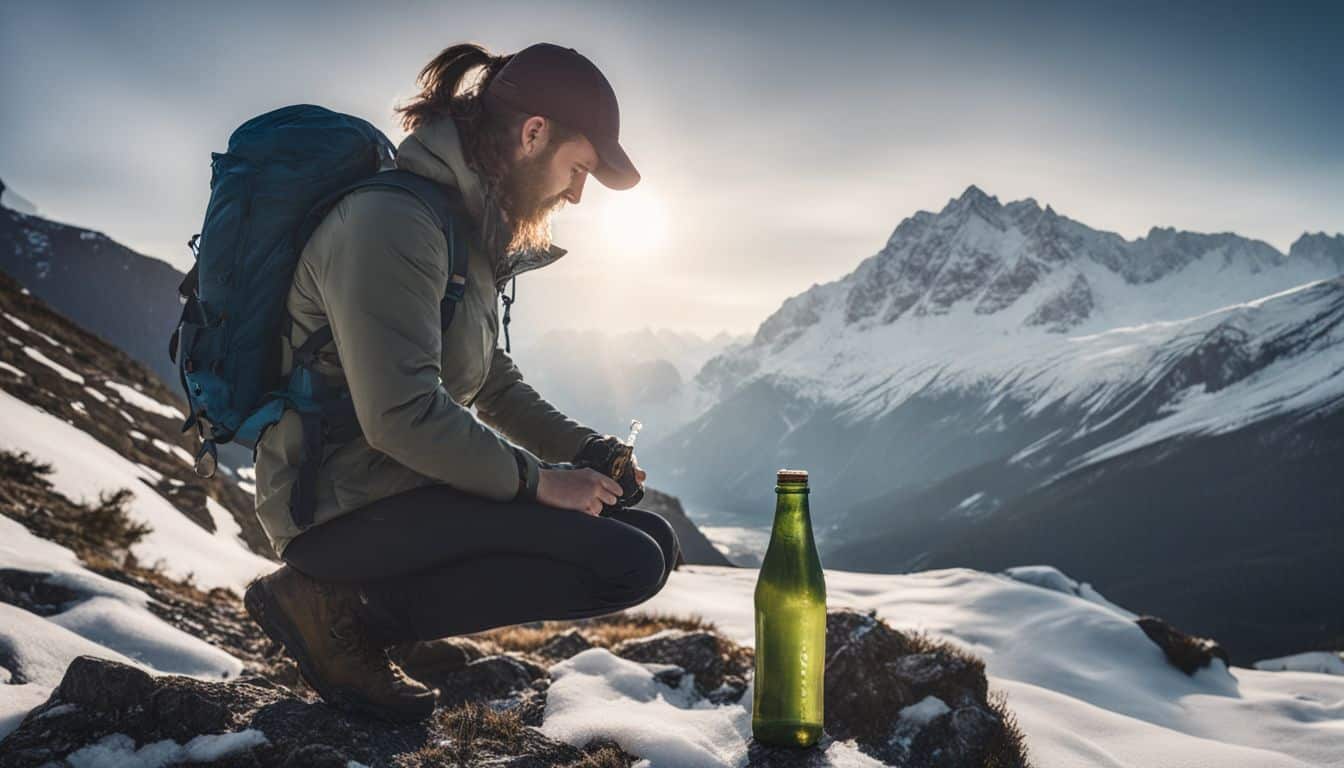
Staying hydrated in cold weather is crucial for winter hiking success. Learn essential tips for carrying and managing water on the trail, as well as the importance of hydration in cold weather.
Stay safe and hydrated by reading more here.
Tips for carrying and managing water
Carrying enough water is important for winter hiking and snow trekking. Here are some tips to help you manage your water:
- Use an insulated water bottle or thermos flask to prevent freezing. This will keep your water drinkable for longer periods in cold conditions.
- Carry a sufficient amount of water based on the length and intensity of your hike. It’s better to have more than less, especially if you’re going on a longer trek.
- Drink regularly during your hike, even if you don’t feel thirsty. In cold weather, it can be easy to forget about hydration, but it’s crucial for your body to function properly.
- Consider using a hydration bladder or backpack system that allows you to sip water without stopping. This can be more convenient than having to take off your backpack every time you need a drink.
- If you’re planning a multi – day hike, research the availability of water sources along the trail beforehand. Plan where and when you’ll refill your bottles or containers.
- Always carry a small emergency supply of water as a backup in case unexpected circumstances arise.
Importance of hydration in cold weather
Staying hydrated is extremely important when hiking in cold weather. It can help prevent hypothermia and boost your immune system, making it easier to fight off infections. When the air is dry and temperatures are low, it’s easy to become dehydrated quickly.
Proper hydration also plays a role in breaking down fat and regulating digestion. So, make sure to drink plenty of water before, during, and after your winter hike or snow trekking adventure to stay safe and healthy.
Using Spiky Tips for Winter Hiking
Using spiky tips for winter hiking can greatly enhance your safety and stability on icy trails. From reliable trekking poles to microspikes and snowshoes, these essential tools will help you navigate through challenging winter conditions with ease.
Don’t miss out on this valuable information – read more about it in our comprehensive guide for winter hiking and snow trekking!
Hiking poles
Hiking poles are an important tool for winter hiking. They can help you stay stable and balanced on slippery terrain. The spiky tips on hiking poles provide extra traction on snow and ice, preventing slips and falls.
Whether you’re climbing steep slopes or walking along icy trails, hiking poles can help maintain your balance and reduce stress on your limbs. By transferring weight to the arms and poles, hiking poles make it easier to navigate through snowy or icy conditions.
So don’t forget to bring your trusty hiking poles with spiky tips on your next winter hike!
Microspikes
Microspikes are handy traction devices that you can use for winter hiking and running on flat terrain covered in snow or ice. They give you surefooted traction, making it easier to navigate slippery surfaces.
With microspikes, you’ll feel more stable on icy trails during your winter hikes. These nifty accessories provide extra traction on the snow and ice, reducing the chances of slipping and falling.
The best part is that microspikes are lightweight and flexible, so they’re really easy to put on over your regular winter boots or hiking shoes. Give yourself a boost of confidence with these reliable spiky tips!
Snowshoes
Snowshoes are an important tool for winter hiking and trekking. They help you walk on the snow without sinking, providing a good amount of traction. With snowshoes, you can explore snowy trails and enjoy winter outdoor activities with more ease and safety.
When using snowshoes, it is also helpful to have trekking poles for balance and stability. These poles can assist in tricky maneuvers and give you extra support on uneven terrain. So, if you’re planning a winter hike or trek, make sure to bring along your snowshoes and trekking poles for a successful and enjoyable adventure!
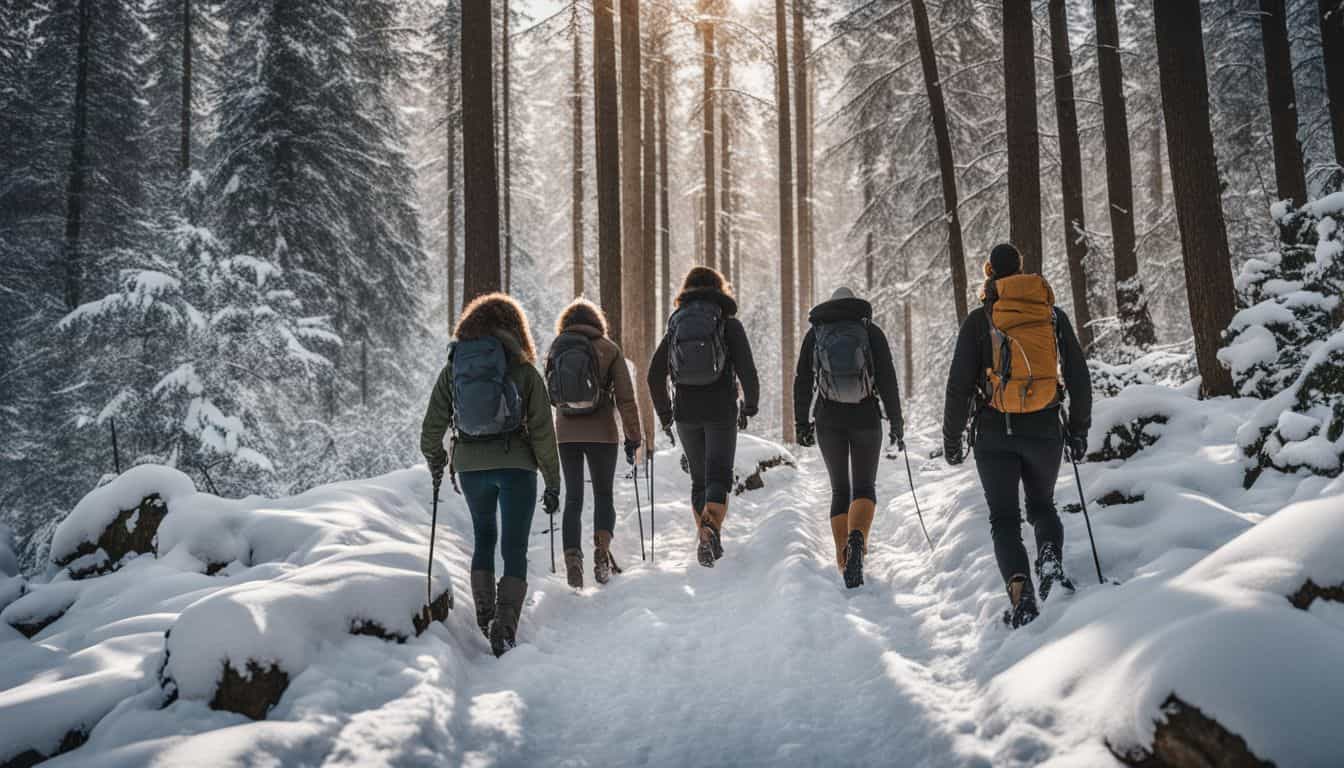
Winter Hiking Techniques
To navigate icy and snowy conditions, practice walking like a penguin, follow geese formations for the safest route, layer your clothing for temperature control, and always respect your turn-around time.
Walking like a penguin
When winter hiking or trekking in snowy and icy conditions, it’s important to use techniques that increase stability and reduce the risk of slipping. One proven technique is walking like a penguin.
This involves taking short, shuffling steps with your feet slightly turned out. By doing this, you can distribute your weight evenly and improve traction on slippery surfaces. It’s also recommended to walk slowly and carefully to avoid accidents.
To further enhance your safety, consider using microspikes and gaiters, which provide additional traction and protect against snow entering your shoes. By incorporating these techniques into your winter hikes, you can enjoy a safer and more successful outdoor adventure.
Following geese formations
When hiking in winter, following the path of Canada geese can be a helpful technique. Just like these birds flying in formation, geese often choose the most efficient route to their destination.
By walking in their footsteps, you can save energy and make your trek easier. The geese create paths in newly fallen snow, which makes it simpler for you to navigate through the terrain.
This technique is especially useful when hiking off-trail or exploring areas with deep snow cover. So next time you’re out on a winter hike, keep an eye out for those geese and follow their lead!
Layering and venting
Layering and venting are essential techniques for winter hiking. When I hit the trails in cold weather, I always dress in layers to stay warm and adapt to changing temperatures. It’s important to have three basic layers: a base layer, insulation layer, and outer shell.
The base layer should be made of a wicking material that disperses moisture and keeps you dry. This helps regulate your body temperature and prevents overheating or chilling. Adding an insulating layer on top provides extra warmth, while the outer shell protects you from wind, rain, or snow.
Venting is also crucial for temperature regulation during strenuous activity. By opening zippers or adjusting vents on your clothing, you can release excess heat and prevent sweating too much.
Honoring turn-around time
When winter hiking, it’s really important to honor your turn-around time. This means knowing your own limitations and being aware of dangerous weather conditions. If things start getting too challenging or unsafe, don’t hesitate to turn back.
Your personal safety should always be the top priority when you’re out in the winter wilderness. So, be flexible and willing to change plans if necessary. Stay safe and enjoy your winter hiking adventure!
Carrying Essential Gear for Emergencies
Carrying essential gear for emergencies is crucial when going winter hiking. Here are some important items to bring:
- Winter hiking essentials: Make sure to bring a map, compass, and a first aid kit.
- Cold weather hiking gear: Pack extra warm clothing like hats, gloves, and thermal layers.
- Proper winter hiking clothing: Wear waterproof and insulated jackets and pants to stay dry and warm.
- Warm and waterproof boots: Invest in quality boots that will keep your feet comfortable in cold and wet conditions.
- Necessary gear for winter hiking: Bring a headlamp or flashlight, as well as a whistle for emergencies.
- Emergency contact information: Carry a list of emergency contacts in case you need help on the trail.
Tips for Safety on Winter Hiking Trips
Stay safe on winter hiking trips by going out earlier in the day and keeping your trips shorter, avoiding hiking alone, making sure you have knowledge of the location and route, and maintaining proper nutrition and hydration.
Going out earlier and keeping trips shorter
Starting my winter hikes earlier in the day is an important safety measure. With limited daylight hours, it’s crucial to take advantage of the time we have. By starting early, I can make sure I have enough daylight to complete my hike before it gets dark.
This helps me avoid hiking in darkness and reduces the risk of getting caught in bad weather. It’s always a good idea to plan shorter trips during winter as well, as this minimizes the chances of running out of daylight before reaching my destination.
So, by going out earlier and keeping my trips shorter, I can stay safe and enjoy my winter hikes without worrying about being caught in darkness or unpredictable weather conditions.
Avoiding hiking alone
When it comes to winter hiking safety, one of the important tips is to avoid hiking alone. It’s always better to go with a hiking buddy or a group instead of going solo. By having someone else with you, you can help each other out if something goes wrong.
Plus, it makes the hike more enjoyable when you have company. So remember, always try to find a hiking companion or join a group for your winter hikes to stay safe and have fun along the way.
Knowledge of location and route
Knowing the location and route is really important for staying safe during winter hikes. Understanding the terrain and conditions can help me plan my journey and navigate through challenging areas.
Since winter hiking trails may not be marked or maintained, having good routefinding skills is necessary. It’s also important to be cautious when relying on others’ tracks, as they might lead me in the wrong direction.
That’s why I always double-check my own navigation. By properly planning, preparing, and having knowledge of winter hiking safety, I can have a successful and enjoyable experience on my hike.
Proper nutrition and hydration
Proper nutrition and hydration are very important when you go winter hiking. To stay safe and have a successful trip, make sure to bring enough water with you. Aim to drink about half a liter of water every hour during your hike.
It’s also important to eat snacks or meals throughout the day to keep your energy levels up. This will help you stay strong and focused on the trail. Remember, staying hydrated and nourished is essential for a great winter hiking experience.
Comprehensive Guide for Winter Hiking and Snow Trekking
Winter hiking and snow trekking can be both challenging and rewarding experiences. To ensure your safety and enjoyment, it’s important to follow a comprehensive guide. First, make sure you dress appropriately by layering your clothing.
This includes wicking base layers, insulating mid-layers, and a waterproof outer shell. Don’t forget to bring extra layers in case the weather changes.
Staying hydrated is crucial during winter hikes. Carry water in insulated bottles to prevent freezing, and drink regularly to avoid dehydration. Remember that even in cold weather, our bodies still need water!
Having the right equipment is essential for winter hiking and snow trekking. Invest in microspikes or crampons for better traction on icy surfaces. Trekking poles also provide stability on snowy terrain.
If you’re planning on hiking through deep snow, consider using snowshoes.
Another tip is to learn some winter hiking techniques. Walk like a penguin by taking small steps with your feet turned slightly outwards – this helps prevent slipping! Follow geese formations when walking through deep snow; their tracks are easier to hike on than untouched areas.
Always be prepared for emergencies by carrying essential gear such as a first aid kit, headlamp, map, compass or GPS device,and emergency shelter.This will help keep you safe if something unexpected happens
Lastly,don’t forget about safety tips while winter hiking.Hike earlier in the day and keep trips shorter since daylight hours are limited.Avoid going alone;hiking with a partner increases safety.Come prepared with knowledge of your location,routes,and trail conditions.Also,pay attention to proper nutrition & hydration needs.Winter conditions can deplete our energy faster,having nourishing snacks handy will help maintain endurance
By following this comprehensive guide for winter hiking and snow trekking,you’ll be well-prepared,your experience will be safe,enjoyable,& memorable
Recommended Winter Hiking Trails
Some of the best winter hiking trails include Ross Lake National Recreation Area in Washington, Mount Rainier National Park in Washington, Shenandoah National Park in Virginia, Great Smoky Mountains in Tennessee, Muddy Mountains Wilderness Area in Nevada, and Mojave National Preserve in California.
Ross Lake National Recreation Area, Washington
Ross Lake National Recreation Area in Washington is a great spot for winter hiking and snow trekking. It’s part of the North Cascades Complex, managed by the National Park Service, offering a range of recreational activities all year round.
The area includes stunning places like North Cascades National Park, Ross Lake, and Lake Chelan National Recreation Areas, as well as Mt. Baker-Snoqualmie, Okanogan, and Wenatchee National Forests.
One popular trail to explore is the Ross Dam Trail which provides breathtaking views of snow-capped mountains, waterfalls, and level terrain to make your hike enjoyable. You can easily access Ross Lake along the North Cascades Highway with just a 0.8-mile hike from the parking lot to reach the water taxi dock.
Mount Rainier National Park, Washington
Mount Rainier National Park in Washington is a fantastic destination for winter hiking and snowshoeing. With over 260 miles of maintained trails, there are plenty of options for outdoor enthusiasts to explore.
Although most roads in the park are closed during winter, you can still access the area from the Nisqually Entrance to Longmire. The Longmire Historic District is a popular spot to visit, where you can enjoy views of Mount Rainier and even discover mineral springs along the way.
Don’t forget to bring your snowshoes and experience the breathtaking beauty of this snow-covered landscape.
Shenandoah National Park, Virginia
Shenandoah National Park in Virginia is a great destination for winter hiking. The park offers recommended trails that cater to hikers of all skill levels. With over 500 miles of hiking trails, you’ll have plenty of options to choose from.
One popular trail is Stony Man, which offers breathtaking views and is relatively easy to hike. Frazier Discovery Trail is another fantastic option, known for its diverse wildlife and beautiful scenery.
If you’re up for a more challenging hike, Dark Hollow Falls will take you on a steep descent to an impressive waterfall. Keep in mind that weather conditions can be unpredictable in the park, so it’s always a good idea to check the forecast and come prepared with appropriate gear and clothing.
Great Smoky Mountains, Tennessee
The Great Smoky Mountains in Tennessee offer unique views and experiences during each season, including winter. There are recommended winter hiking trails in the Great Smoky Mountains for those interested in winter hiking and snow trekking.
These trails provide opportunities for safe and enjoyable winter hikes. However, it’s important to be aware that traveling in the Great Smoky Mountains backcountry areas during winter has inherent risks, and hikers should assume complete responsibility for their own safety.
The Great Smoky Mountain National Park in Tennessee is a popular destination for hikers during all seasons, including winter.
Muddy Mountains Wilderness Area, Nevada
The Muddy Mountains Wilderness Area in Nevada is a great destination for winter hiking. With approximately seven miles of designated trails, this wilderness area offers stunning views of colorful sandstone outcrops in Hidden Valley and conglomerate cliffs in Gale Hills.
Located near Las Vegas, the Muddy Mountains cover over 45,000 acres and can only be accessed by 4WD vehicles. It’s a perfect place for outdoor enthusiasts to enjoy hiking, scenic viewing, hunting, and exploration.
So pack your gear and get ready for an adventure in the Muddy Mountains!
Mojave National Preserve, California
Mojave National Preserve in California is a beautiful place for winter hiking. As a hiker, I love exploring the rugged mountain ranges, ancient lava flows, and stunning sand dunes of this preserve.
It’s also fascinating to see the diverse desert plants and wildlife that call this area home. The National Park Service manages the preserve and has established hiking trails like the Hole-in-the-Wall Nature Trail.
It’s not only a great place for hiking but also offers opportunities for camping and other outdoor activities.
Leave No Trace Principles for Winter Hiking
Winter hiking is a great adventure, but it’s important to be responsible and respect the environment. Here are some Leave No Trace principles for winter hiking:
- Travel and camp away from avalanche paths, steep slopes, and unstable snow – this reduces the risk of accidents and keeps you safe.
- Choose a campsite on a durable surface like snow or rock to protect fragile vegetation and minimize damage to the environment.
- Follow the Leave No Trace Seven Principles – they provide guidelines for responsible outdoor activities and help you minimize your impact on nature.
- Be considerate of other visitors – treat them with respect and share trails and outdoor spaces responsibly.
- Practice good trail etiquette by staying on designated paths to avoid damaging vegetation and disturbing wildlife.
- Dispose of waste properly – pack out all trash, including food scraps, so as not to attract animals or leave a mess behind.
- Preserve water sources by not polluting them with soap or other contaminants – use biodegradable products if necessary.
- Keep noise levels down – respect the peace and tranquility of the wilderness by avoiding loud voices or music.
- Minimize campfire impacts by using existing fire rings or established fire pits, or better yet, use a camping stove instead of building a fire.
- Educate yourself about local regulations and follow them to ensure you’re doing your part in protecting the environment.
Conclusion on Winter Hiking And Snow Trekking
In conclusion, winter hiking and snow trekking can be enjoyable and safe if you follow these proven tips for success. Dress appropriately in layers to stay warm and adjust to changing temperatures.
Stay hydrated, use traction devices, hike with a partner, invest in good gear, and be prepared for emergencies. With these tips in mind, you’ll have a successful winter hiking adventure!
FAQs on Winter Hiking And Snow Trekking
1. Is winter hiking and snow trekking dangerous?
Winter hiking and snow trekking can be challenging and potentially dangerous, but with proper preparation, knowledge of the terrain, and appropriate gear, it can be done safely.
2. What are some essential items I should bring for winter hiking or snow trekking?
Essential items to bring for winter hiking or snow trekking include warm layers of clothing, waterproof boots or shoes with good traction, a map and compass (or GPS), extra food and water, a first aid kit, headlamp or flashlight with spare batteries, and emergency supplies like a whistle and space blanket.
3. How should I prepare physically for winter hiking or snow trekking?
To prepare physically for winter hiking or snow trekking, it’s important to engage in regular exercise that builds endurance such as walking or jogging. Strengthening exercises focusing on leg muscles will also help with stability on uneven terrain.
4. Are there any specific safety precautions I should take while winter hiking or snow trekking?
Some safety precautions to take while winter hiking or snow trekking include staying hydrated by drinking plenty of water even if you don’t feel thirsty, wearing sunscreen to protect exposed skin from harmful UV rays reflecting off the snow,
and checking weather forecasts before setting out to avoid hazardous conditions.
5. Can beginners attempt winter hiking or snow trekking?
While experience in outdoor activities is beneficial when attempting winter hikes or treks in snowy conditions,
beginners can participate as long as they educate themselves about the risks involved,
choose appropriate trails suitable for their skill level,
and go with experienced companions who can provide guidance and support.
It’s always recommended to start with shorter trips until confidence is built up gradually over time.

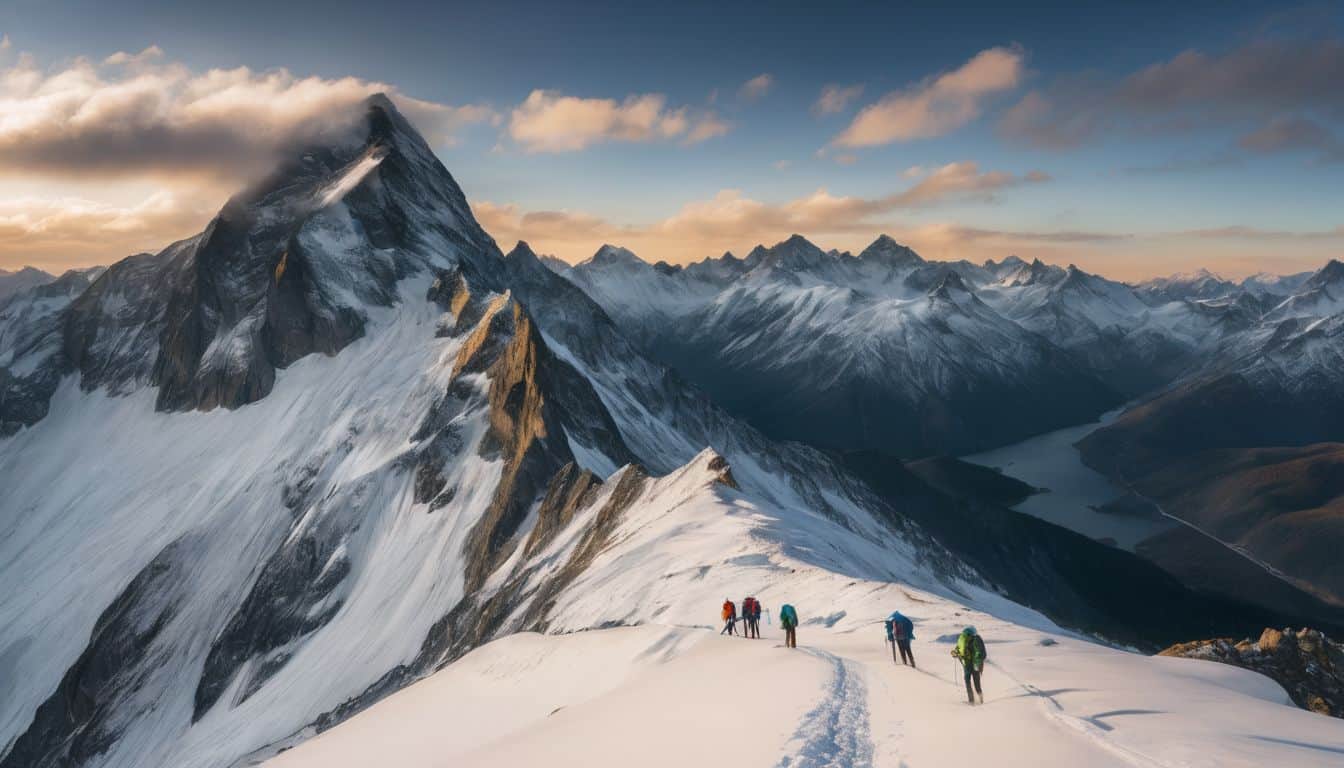
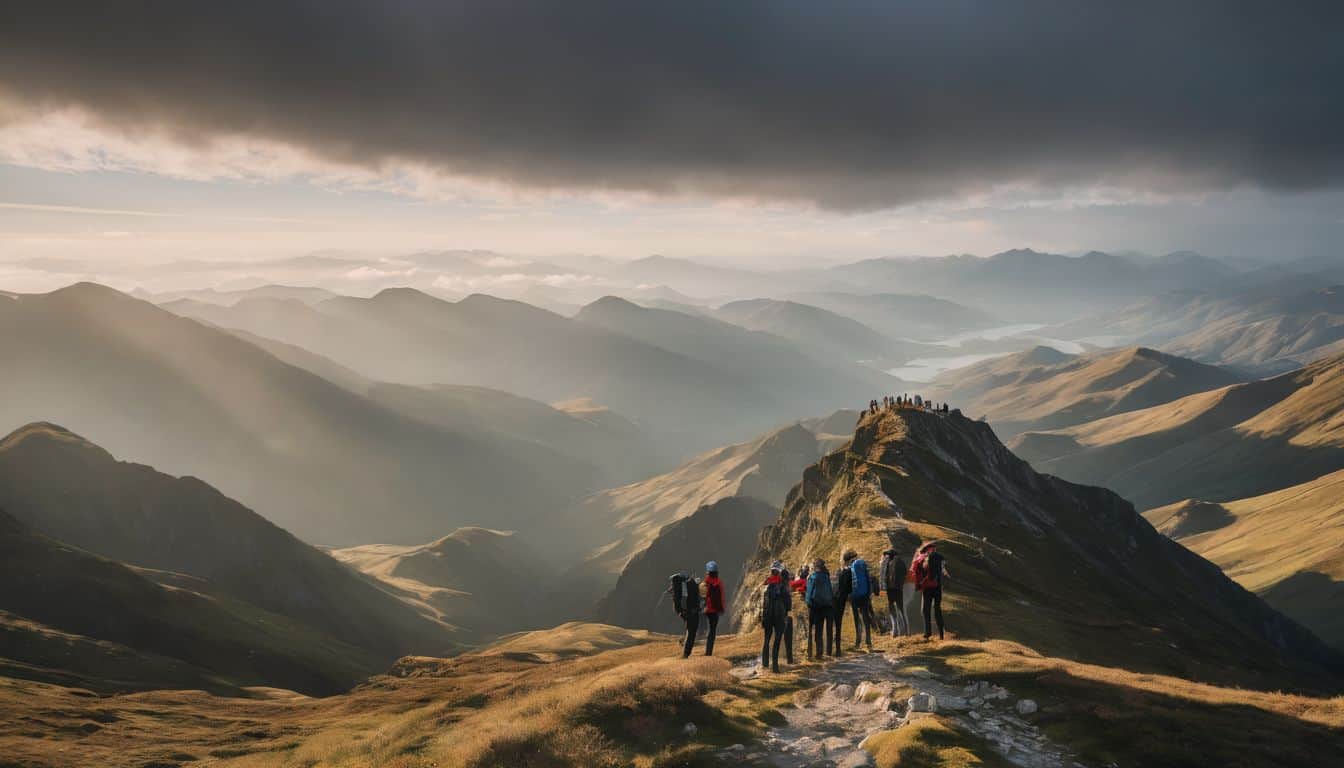
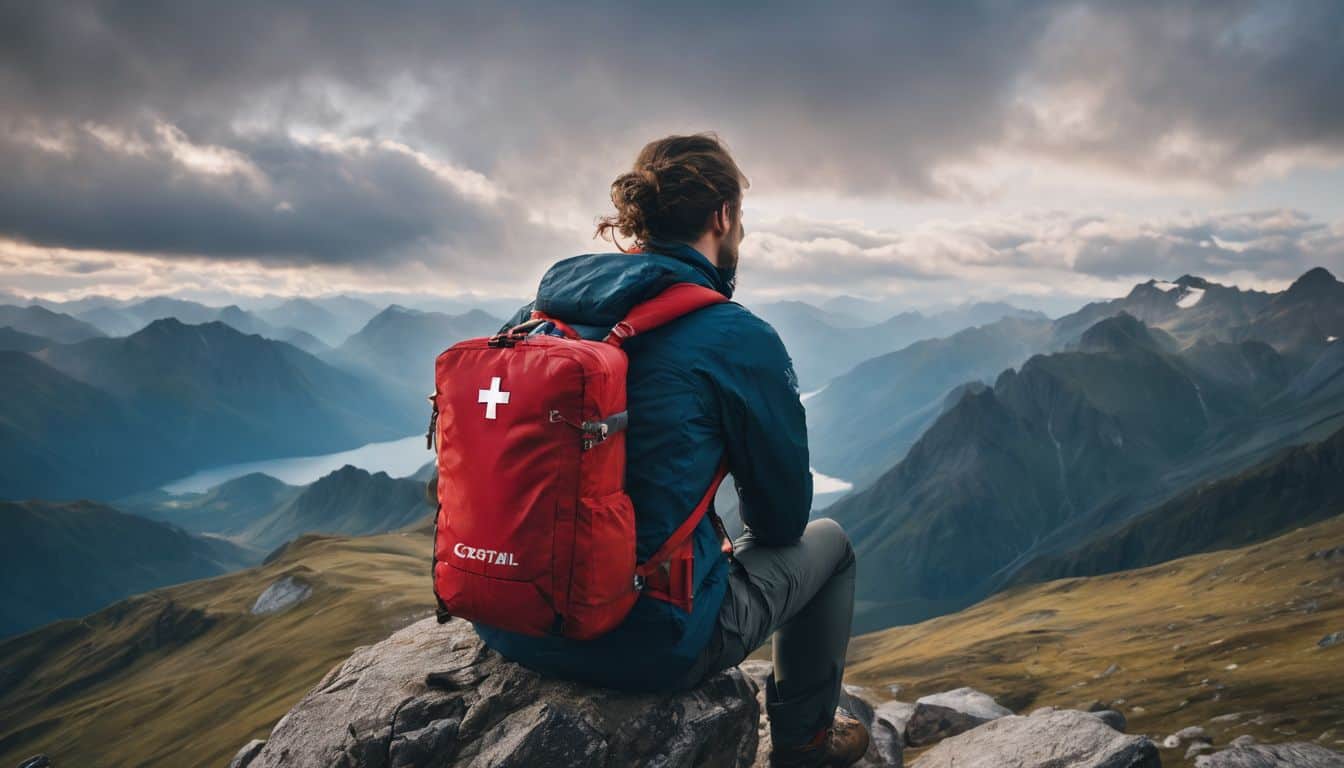
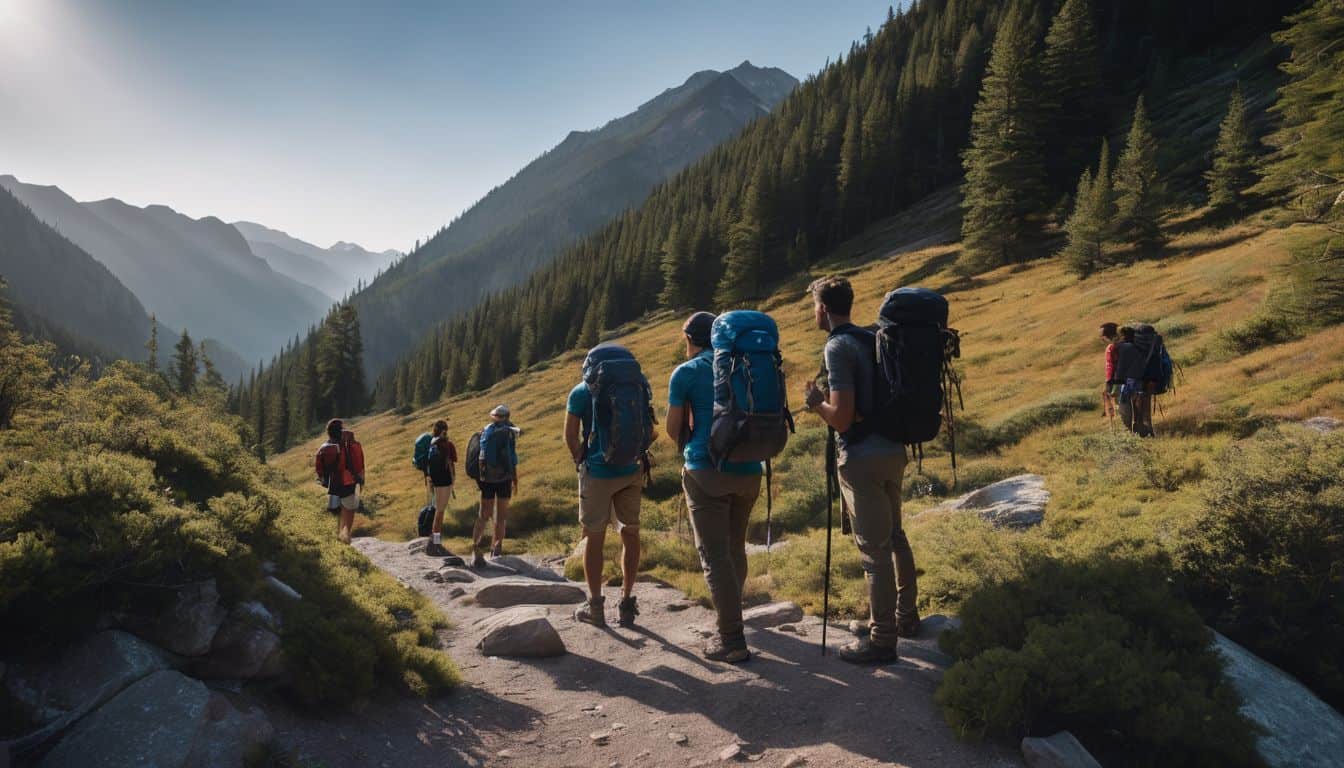
Leave a Reply